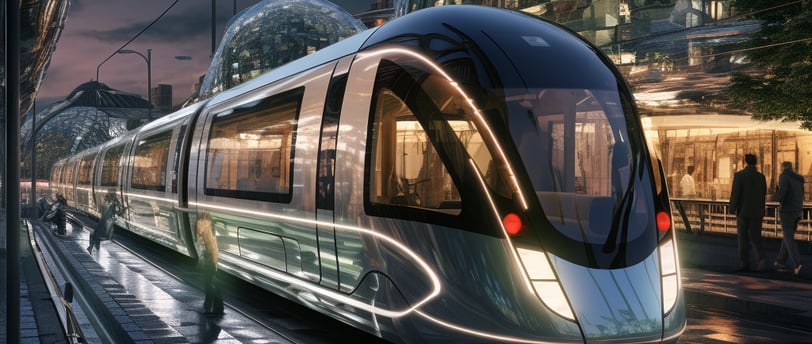Driverless Trains and Automation: Steering the Railways Towards a Brighter Future
9/24/20232 min read


Driverless Trains and Automation: Steering the Railways Towards a Brighter Future
The landscape of transportation is rapidly changing, thanks in part to the integration of state-of-the-art technology. One sector that has embraced this transformation wholeheartedly is the railways, with the introduction of driverless trains and sophisticated automation systems.
The Evolution of Automation in Railways
Automation in railways is not a novel concept. As early as the 1960s, certain rail systems had already integrated semi-automatic processes. London's Victoria Line, for instance, incorporated a degree of automation upon its opening in 1967, providing smoother starts and stops and optimizing service frequency.
The Irresistible Lure of Driverless Trains
The transition to driverless trains offers a multitude of benefits:
Safety: A significant portion of rail accidents can be traced back to human error, from distraction and fatigue to judgment lapses. Automated trains, free from these pitfalls, are invariably safer. The UITP reports a marked decrease in human error-related accidents in automated systems.
Efficiency and Capacity: Computer-controlled trains can run closer together, allowing for increased frequency and network capacity. This is invaluable in metropolitan areas where rail networks are often congested.
Reliability: Automated systems can ensure punctuality, leading to more reliable timetables and overall improved passenger experience.
Pioneers in the Realm of Driverless Railways
Cities such as Paris, Singapore, and Copenhagen have fully embraced driverless metro systems. On a larger scale, Australia's mining industry has integrated driverless freight trains, leveraging their efficiency and safety advantages in remote operations.
The Roadblocks Ahead
However, the path to a fully automated rail network isn't without challenges:
Employment Concerns: The potential loss of jobs, especially for train drivers, is a considerable concern. Retraining and job reallocation are necessary to address these socio-economic impacts.
Technical Hurdles: Creating systems that can anticipate and deal with unexpected obstacles, technical glitches, or emergencies is paramount. Moreover, ensuring consistent operations in varying weather conditions is a challenge engineers are tirelessly working on.
Public Trust: Convincing the public to trust a machine with their safety isn't trivial. Building this trust will require transparency, rigorous testing, and impeccable safety records.
Where Are We Headed?
The integration of automation in railways is more than just an exciting technological advancement; it's a necessity for the future. As our urban centers grow and the demand for efficient public transport rises, automated rail systems will play an integral role in shaping sustainable and efficient cities.
Sources


